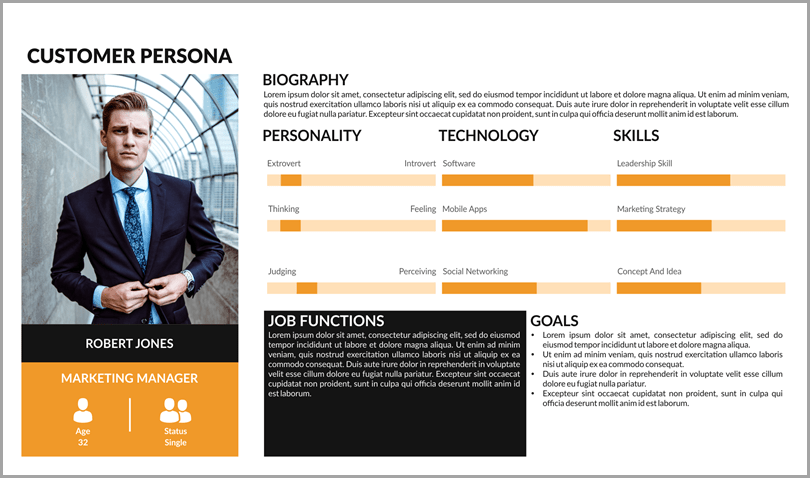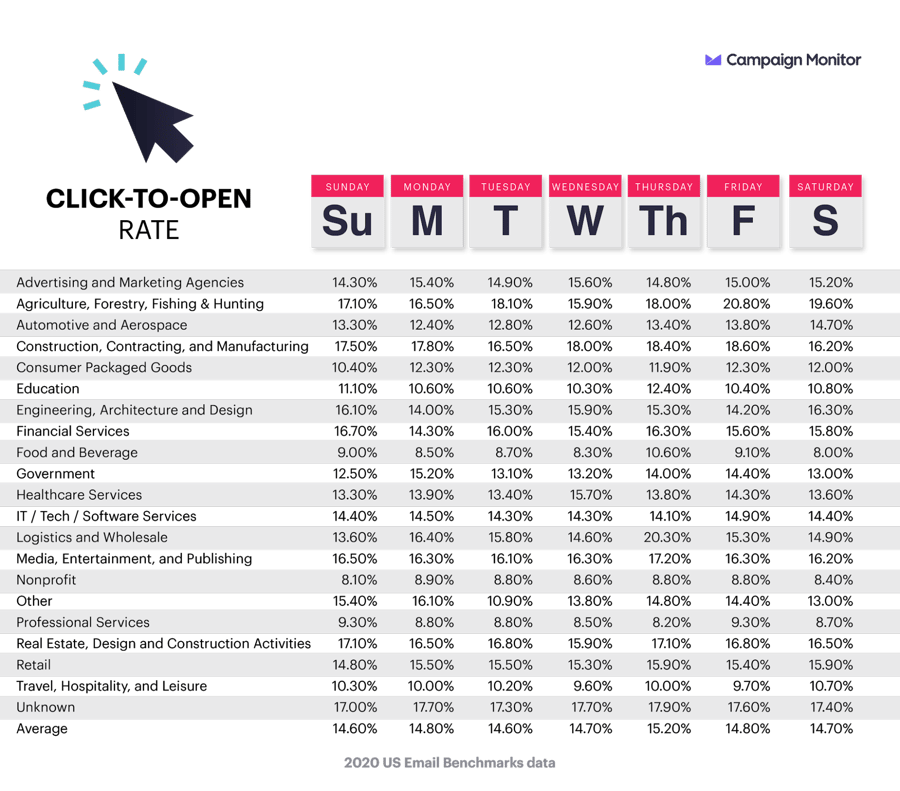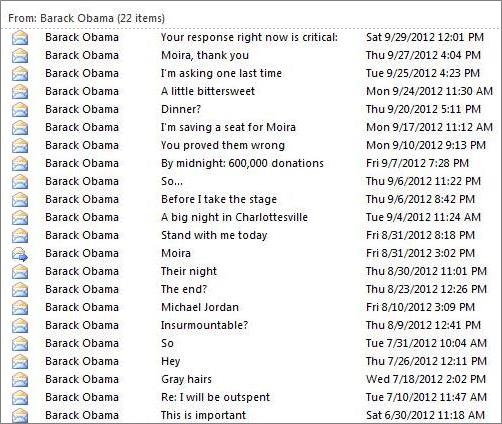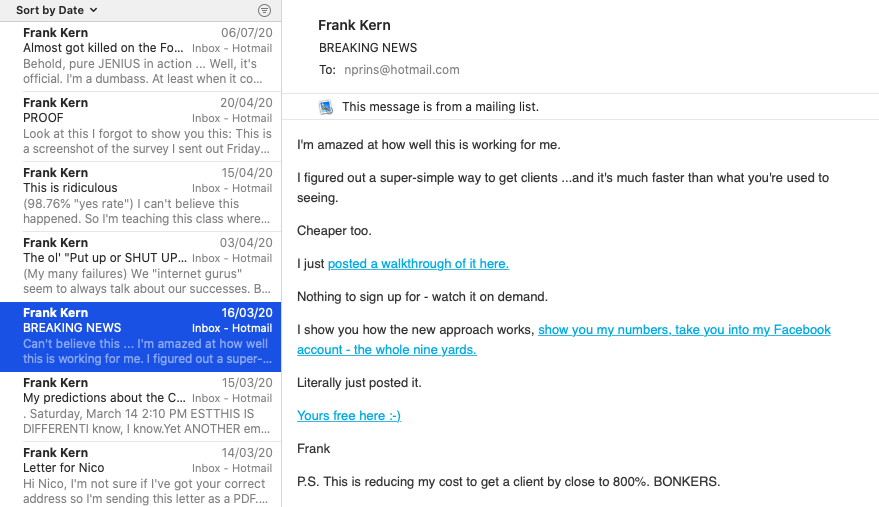
Email marketing is a great way to connect with leads, build relationships, and turn prospects into customers. A key element of your success as an email marketer will be your ability to write copy that engages and converts your readers.
In this guide, I’ll teach you how to create that high-converting copy. Let's take a deep dive into the world of email marketing.
1. The Importance of a Customer Persona
Great email copy is tailored to your audience, their problems, and needs. This much is obvious. However, many marketers fail to think about who they are writing for. Creating a clearly defined customer persona before you start writing your email copy will help you sidestep this problem.
A customer persona is a profile of your ideal client, and having one has the following benefits:
- Helps you figure out how to talk to your reader (you’d probably write differently for a C-suite executive compared to a stay at home Mum)
- Provides insights regarding what content or products/ services would likely interest them
- Helps you align your sales pitch with your audience’s goals
That’s just a snapshot of the benefits.
Your customer persona should cover demographic information, job role, goals, and challenges. Here’s an example:

Source: Jeff Bullas
Ideally, every person in your company should be able to describe your customer persona. It's that important! Mine is stuck on the wall next to the whiteboard in my office.
2. Choose Your Role Model
If you want to become an expert in any field, you should learn from your peers. In the email marketing and copywriting niche, there are many talented people you can draw inspiration from.
For example, Frank Kern is a phenomenal marketer whose informal “story-selling” formula has made him millions of dollars. He’s an expert in affiliate marketing, copywriting, and sales.
Ryan Deiss, author of Digital Marketing for Dummies, is another email marketing expert.

I’ve learned a lot from the courses I’ve bought from experts like Ryan Deiss and Frank Kern. You might decide that Frank Kern’s California surfer vibe personality is not to your taste. That’s fine.
You might read an article by Joanna Wiebe from Copyhackers and decide that she’s your perfect teacher. If that’s the case, then great. She’s got a lot of interesting information to share.
Who you learn from is less important than the act of learning.
Find a mentor whose work you find interesting, engaging, and insightful. Learn as much as you can from them, and then apply those lessons to your copywriting. Don’t get me wrong; you’ll still make mistakes. However, you’ll make mistakes a lot less often if you try to become an expert in your field by learning from your peers.
3. Define Your Value Proposition
One of the most important lessons of email marketing is learning to respect a person’s inbox. Someone took the time to sign up for your email list because you promised something of value. You shouldn’t take this for granted.
Unfortunately, when you sign in to your email marketing platform and see 9,521 people on your list, it’s easy to forget that you made a promise to your subscriber. So, instead of sending an email that has value, you try to sell them something or update them about a blog post you just published.
Both of these actions are centered on the “what’s in it for me” value proposition.
Rather than focusing on yourself, a mistake that can cost you the trust of your subscribers, consider your recipient. Preferably as a person.
Even better, imagine you were sending the email to a friend.
You should also consider the type of content your subscribers will receive. If you can define a clear value proposition for subscribers to your email list, not only will you grow your list faster, you’ll have a more engaged audience.
Some businesses have nailed their value proposition. Below are some examples of people and businesses that I feel have an engaged email list. I’ve also shared their Unique Selling Point (USP):
- Appsumo - Sporadic emails with lifetime software offers
- Flippa - A weekly email with a shortlist of interesting websites to buy
- Noah Kagan - A brain dump of personal stories and resources sent intermittently
- Making Sense of Cents - A mix of personal updates and sales emails
- Johnny Ward - Random inspirational travel updates & the occasional sales email
Each person or company on that list has defined their value proposition.
Think about what you have to offer. Then try and fill in the blank.
When someone signs up to my email list they will receive ______
If you struggle to fill in the blank, you haven’t defined your value proposition. That’s a problem. You should find it easy to fill in the blank.
If you’re finishing the sentence with a statement like, “you’ll receive useful updates,” you also have a problem. That’s too vague. Nail down your value proposition, and then ask your friends or customers if that’s the kind of content they’d like to receive in their inbox.
My “Boring” Subject Line Case Study
You’ll find a lot of articles on the net that discuss the importance of an element of copywriting that fail to discuss your value proposition. Subject lines are a good example.
Consider these hacks to improve your open rate:
- Adding an emoji to your subject line will result in a higher open rate
- Personalized promotional email subject lines see a 29% higher open rate
I could go on.
I’m not going to say these hacks don’t work. They might work for anybody once or twice.
However, if you can’t articulate your goals, I almost guarantee these hacks will fail you. This is because you automatically assign emails that have no value to the trash.
Emails from a sender you find interesting will almost always get opened.
I put this theory to the test. For six months, I sent an email every Tuesday to my subscribers. The email always had the same subject line. It was this; “Best Lifetime Software Deal Of the Week”
That was it: same subject line, zero variation.
My open rate hovered between 30-50%.

Source: Campaign Monitor
If you manage an email list, you’ll know that’s a very high open rate. To put my open rates in context, the above image from Campaign Monitor provides a snapshot of average open rates by industry.
I was hitting more than double the average for most industries.
The reason a boring subject line worked is because I had a good value proposition. I’m confident that if you nail your value proposition, your subscribers will become more engaged.
4. Develop Your Copywriting Style
Some marketers will say you should always write in an informal tone. Some will say shorter emails are better than longer ones, while others will swear the opposite.
The truth is that there is no one-size-fits-all approach.
Yes there are rules to copywriting, but those rules are not about your style of writing. They are more suggestions regarding the approach and the psychology behind what triggers a person to take action. It’s important you learn the theory.
If you want to be a great copywriter, you must find your voice. Take the chaps at Appsumo, for example. They have a distinctive style.

You might love the way they write. Or maybe you hate it.
Honestly, it doesn’t matter. That’s because, those people who love it, the superfans, feel like they have a connection with the company.
A distinctive voice will help you build brand loyalty by creating a legion of superfans.
Try and find your voice. It should align with the way you write blog posts and other content. If you’re new to copywriting, you might start by emulating some of your peers. That’s fine. But, over time, try and create a voice that is distinctly yours. That’s what people will fall in love with.
Email Copywriting Tips
The first four points in this post on writing great copy are the most important part of this article. What follows are suggestions and things you can try to implement within your copy to maximize your open rate and CTR.
Nail That Subject Line
There are two main ways to approach a subject line: formal and direct, or informal and creative. Both can work, but your choice must be informed by the goal of your campaign.
The direct subject line simply states what the email is about without any bells and whistles. Here’s an example I recently received from LinkedIn:

The direct subject line does not employ any special tricks to get the recipient to open it. Instead, it merely states what value they will find inside.
If you’re looking for a job, and LinkedIn sends you an email with a relevant offer, you’d open the message and click the link. The subject line doesn’t need to be clever.
A creative subject line can be trickier to get right, but incredibly effective when done well. Check out these short but attention-grabbing subject lines used by the marketing team behind the (enormously successful) Obama campaign:

Source: Nth Factor
The subject lines used above are the kind you’d expect to receive from a friend. They are offhand.
Creative subject lines can be a great way to get the attention of a subscriber.
Don’t be afraid to experiment with your subject lines and run A/B tests to see what works for your audience. Monitor your open rates to learn what works for your audience.
Engage Readers with Preview Text
Preview text is that short block of text below the subject line that the recipient sees before opening the email. Strong preview text can significantly improve your open rate.
The preview text will often be the first line or two of the email. Take this example from Frank Kern.

The first sentence of the email evokes curiosity.
“I’m amazed at how well this is working for me.”
The obvious question you’re going to have is, “what is working for him?” If that got your attention then you’ll open the email and read the copy.
Use a Clear CTA
Your email must contain a clear Call To Action (CTA). This is what you want your recipient to do. It should be easily actionable and unambiguous. Examples might be “Check out the new range” or “Join us on social media.”
You can use multiple CTAs, as long as they all point towards the same desired action. Ryan Deiss recommends using three CTAs in an email:
- A CTA in the first third of the email for those who do not need any further convincing.
- A second CTA two-thirds of the way through for those who need an extra nudge.
- The final CTA at the end for those who have not yet been convinced.
If you use this three-part strategy, make sure to address the value the reader will get if they take action in a different way. Don’t repeat the same message three times.
Creating a sense of urgency is one of the best ways to get recipients to click on a link. A limited-time offer or limited supplies of a product creates fear of missing out (FOMO), which is hugely effective in driving a high Click Through Rate (CTR).
Experiment with your CTAs. If you have a large list, conduct split tests to see what approach generates the highest CTR.
Send Multiple Emails
Many successful email marketing campaigns rely on the drip effect - sending multiple emails in a sequence to generate an action. Automated email sequences are particularly popular with email marketers that promote special offers.
Email sequences are an effective method for maximizing the chance of a subscriber clicking a link, because you can provide different rationale behind taking action. This article on Connectio, for example, provides a nice illustration of how you’d put an email sequence together.
While email sequences are very effective, the trade off is that sending multiple emails to your subscribers is annoying. Appsumo, for example, limits themselves to one email per promotion. To maximize revenue you might choose to send multiple emails. There’s no right or wrong answer. It’s an internal decision you will need to make.
Segment Your Email List
Segmentation means dividing your audience into subgroups. Doing this means that you can tailor your message to each section of your audience to make it as relevant as possible, thereby increasing clicks and conversions.
There are many ways to segment an email list. You can ask a relevant question at the opt-in stage to determine how you will categorize each individual. Another option is to use a quiz funnel, which asks your audience to answer a set of questions and then categorizes them based on their answers.
You can also segment your list based on actions taken (or not taken). If you offered a downloadable lead magnet to encourage sign-ups, you could send one email sequence to those who downloaded the content and a different sequence to those who did not.
One final tip for you: before you place a new audience member into a category, use an email verification tool to make sure the email address is valid. Too many bounces will result in your emails landing in people’s spam folders.
How to Write High Converting Email Copy
There is an art to email marketing. Though there are tried and tested techniques that have been proven to work, it is not always as simple as following a set of rules. Few marketers get their email campaigns right the first time, and what works for one audience segment will not work for another.
Therefore, you must keep learning, keep experimenting, and keep tracking your metrics to understand which techniques are working. Every audience and every business is unique, so while you can and should draw inspiration from the pros, paying attention to your audience and your results is the most important thing.
It might sound overwhelming, but if you persevere, you’ll soon drive up your email open rate and get those conversions you’ve been longing for. Use your creativity, think outside the box, and just get started!





Leave a reply or comment below